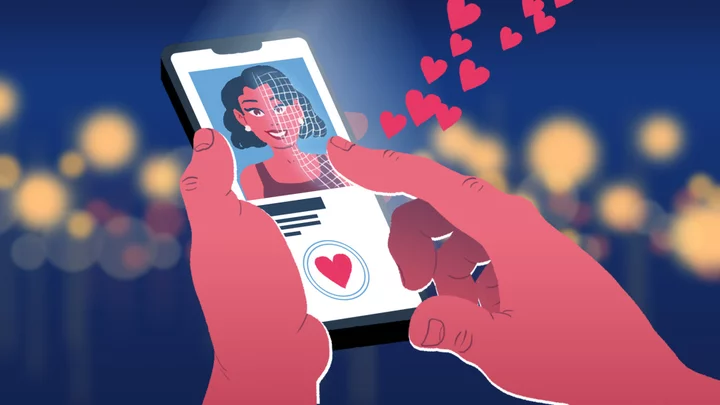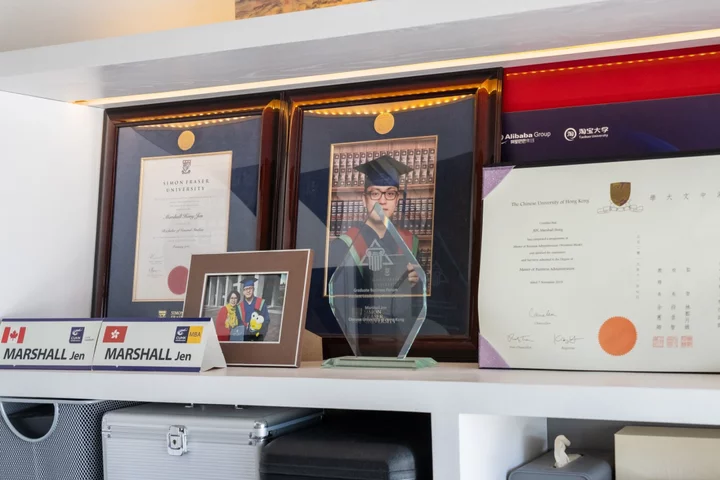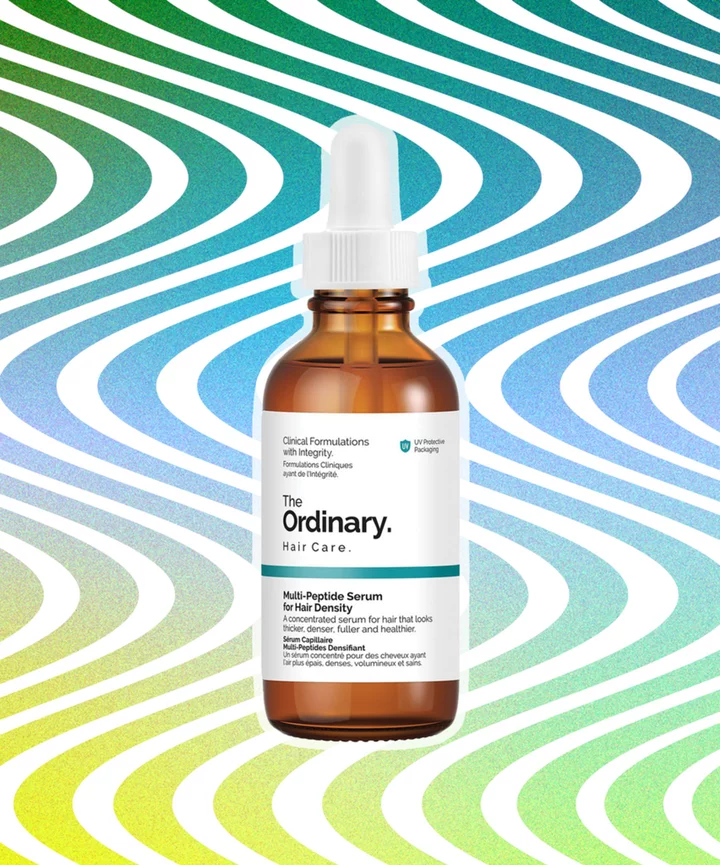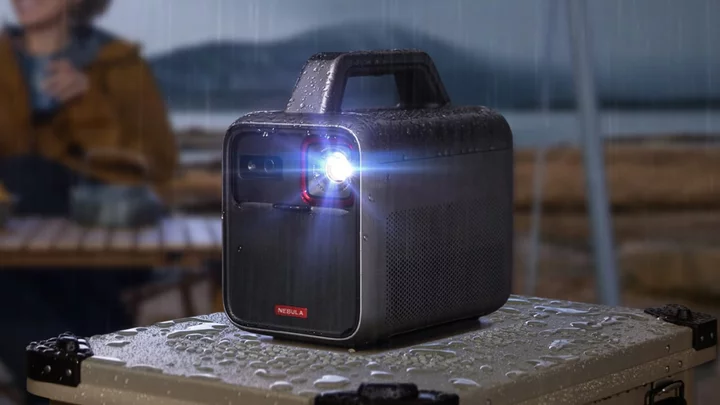On dating apps, everyone is trying to put their best face forward. For some, that's easy — maybe they're genetically gifted, have a knack for taking great selfies, or have friends who are photographers. But for many, filters and editing apps have become a go-to, even if they only use them for minor touch-ups. Now, with AI photo generators rising in popularity, I'm worried we're getting too far from reality.
At a dinner with friends last month, the conversation turned from AI to the fact that photos on dating apps don't always match a person's appearance. Sometimes, it's easy to tell, as they look different in every shot. Other times, it's much more challenging. That gave me an idea. What if I were to take an AI-generated headshot of myself and add it to my dating profile? After all, it's me — but also not me. Would people notice or call me out for it?
The use of AI-generated photos on dating apps is not a new one, there’s an AI tool that creates photos specifically for dating apps, and people have started noticing AI-generated photos on other people’s profiles. Hinge's parent company Match Group declined an interview about whether it's aware of AI-generated photos being used on profiles and if it's doing anything about it. Instead, a representative said that Tinder, which is also owned by Match Group, is working on "an AI-powered tool to help select photos for profiles," which sounds similar to the one Bumble already uses.
To understand the appeal of using AI-generated photos in dating profiles, I decided to give it a try. And the result was soul-crushing. I, naively, never thought that the AI photo would be so popular compared to my other, real photos.
The rise of body dysmorphia
One of my favorite subreddits to peruse is r/InstagramReality. Redditors post edited or filtered photos and videos of other people — celebrities, influencers, and normal folks — they have found on social media, usually next to ones of what the person looks like in real life.
Often, the editing or filtering is comically overdone and obvious. But, sometimes, Redditors have to point out where things warp or changes have been made to show that it’s not real.
It’s scary how rampant and excessive editing is getting. The comments in the subreddit often touch on body dysmorphic disorder (BDD) because, really, how else could people put some of these photos out there and think they look normal?
“It is actually a pretty common psychiatric disorder,” Evan Rieder, a board-certified psychiatrist and dermatologist in New York City, told Mashable of BDD.
About two to three percent of the population has BDD, said Rieder, and it is most likely under-diagnosed because people don’t always bring up their concerns to a mental health practitioner — and aestheticians don’t always ask why someone wants to change something. “They will basically fixate on something that is invisible or barely perceptible to the outside observer,” Rieder said. Mostly, this is the skin and hair; muscles are also significant for men.
BDD isn’t just about poor body image, either — which is often influenced by societal ideals or because of how a person has been treated. It is a serious condition that is listed in the Diagnostic and Statistical Manual of Mental Disorders. At some point, an individual with BDD has performed a repetitive behavior such as mirror checking or reassurance seeking, according to the manual’s fifth and most recent edition, or a mental act such as comparing their appearance with that of others.
“In the ‘90s, the only person that was able to give filtered images was, say, the art director at Vogue magazine, and they would make everybody look perfect.
“Now you have these apps, and you can swipe away all your imperfections and give this hyper-idealized version of yourself that's there for public consumption,” said Rieder. “People often make themselves look unrealistic or cartoony. And they think that some of these things are possible.”
How I generated my AI photos
You may have already heard about Remini, an app that was popular earlier this year when its AI-generated photos of people's potential future children started popping up on Instagram and TikTok. People have been using it this past week to generate '90s-style yearbook photos, as the EPIK app that originated the trend has sometimes been overloaded.
I decided to use Remini for my experiment rather than an app like Lensa, as the AI photos it produces look more realistic (albeit edited). It also has a ton of options for different backgrounds and clothes. To start, I had to sign up for a 1-week free trial, pick my gender: female, male, or other, and upload at least eight photos of myself. I chose two pictures from the past few years, then took the rest over the next few days in various locations and outfits from different angles.
These are four of the photos I used to train the AI model and generate the AI headshots in Remini. Credit: Saira MuellerOnce the photos were uploaded, I chose my first “model image” — the style the AI bases its generated pictures on — and had to wait about 17 minutes for it to work (the first time you generate after uploading photos takes longer, after that it drops down to about three minutes each time).
SEE ALSO: Hinge reveals the top 25 successful promptsThen, it was a case of repetition to get photos that were anatomically and physically correct — the AI is bad at things like hands and generating necklaces, sometimes completely changed my body shape and weight, and one time even put my arm through a wall — and that also didn’t alter my facial features too much. I spent an embarrassing amount of time generating these photos. Ultimately, I chose four I wanted to use on my dating profile.
The four AI-generated headshots from Remini that I picked to use on my Hinge profile. Credit: Saira MuellerThe experiment, I decided, would be done on the dating app Hinge, as commenting on people’s photos and written prompts is at its core, and users still do so regularly. I put the images on my profile for one week each, rotating them out every Monday, alongside five of my actual, non-AI generated photos to see how they would stack up — tallying every like and comment.
The reality (pun intended) of the situation
I uploaded the first photo with the blue turtleneck at 10 p.m. Within 14 hours, I had five likes — all for that photo. Two days later, 60 percent of my likes were for that photo (the remaining 40 being split between my other five shots). By the end of that first week, the AI image had 17 likes and two comments. My non-AI photos, together, got 14 likes and two comments.
These are the five non-AI photos from my Hinge dating profile. Credit: Saira MuellerThat trend continued for the next three weeks, with the AI photos consistently performing better than (or at least equal to) the other photos collectively. If anyone noticed something off about the AI photos (for example, my ears disappear, and the irises aren't spherical in any of them), they didn't comment on it.
Here are six of the comments from men on Hinge about some of my AI-generated headshots. Credit: Saira MuellerIt was, frankly, off-putting to see these generic photos outperform the ones that show the real me — that show my personality, my interests, and my life. Yes, my written prompts got a healthy dose of likes and comments throughout those weeks. Still, it’s hard to remove the physical aspect of a dating profile from that equation — even on an app that foregoes swiping.
The reason the AI photos were likely so well received was summed up perfectly by ChatGPT.
I asked ChatGPT what the four AI-generated headshots have in common. This was its answer. Credit: Saira MuellerWhen I asked it to point out the two AI-generated images out of four photos from my dating profile, ChatGPT said that it can be "challenging to definitively ascertain which ones are AI-generated based purely on visual inspection" but that "some common indicators of AI-generated photos can include perfect symmetry or too-perfect features."
The struggle between seeing perfect features all around you and looking in the mirror and only noticing all of your perceived imperfections is something I've dealt with since I was young. Perhaps it was because I began reading women's magazines at 12. Maybe it's because I was bullied endlessly around the same time due to my skin color, height, and acne, thanks to puberty. It could also be due to my Asian mother, who commented on everything from my hips to my eyebrows for as long as I can remember. Part of it is probably due to social media.
There’s nothing worse for a perfectionist with diagnosed anxiety than having a running tally of all the ways you fall short of your ideal physical self. I asked my housemate about three of the perceived issues on my list, things I’ve struggled to accept for a long time, and she said she has never noticed them — and couldn't see the issues even at the moment when I was sitting in front of her telling her about them.
Looking at the same thing over and over has an effect on you. Rieder explained it as the Mere Exposure Effect. While repeatedly noticing your perceived imperfections in the mirror can have a negative impact, so can the social media you consume.
“The more you see something, the more you find it to be attractive,” said Rieder of the Mere Exposure Effect. “The more images I see of glass skin, the more I’m going to be desensitized to it, and the more I'm going to think it's less strange, and the more I'm going to find it attractive.” Glass skin, for those who are unfamiliar, is a Korean beauty trend in which an individual’s skin has the appearance of glass due to how even-toned, poreless, and luminous it looks.
“Imagine this sort of information overload, showing you what you want to see or what you're thinking about — and then you're clicking on an image, and [social media is] showing you more and more and more of that,” Rieder said. “That can actually warp what you find to be attractive. And we see that all the time in the aesthetic fields.”
The recent shift towards magazines, brands, and shows like Naked Attraction putting natural, unedited bodies out there is a good step. And while I don’t recommend putting AI-generated photos on social media, let alone dating apps (seriously, don’t do it), I can understand why it’s an appealing concept.
It’s taken me a long time to love myself for who I am — something I’m still working on. And while I often wish we lived in a world where editing apps and filters didn’t exist, it’s our reality, and we have to be more aware of how it affects us.
Now that the AI-generated photos are off my dating profile, I get excited every time I see a notification. I know that the person who is interested likes me for who I am — no filters, no editing, and no AI.









